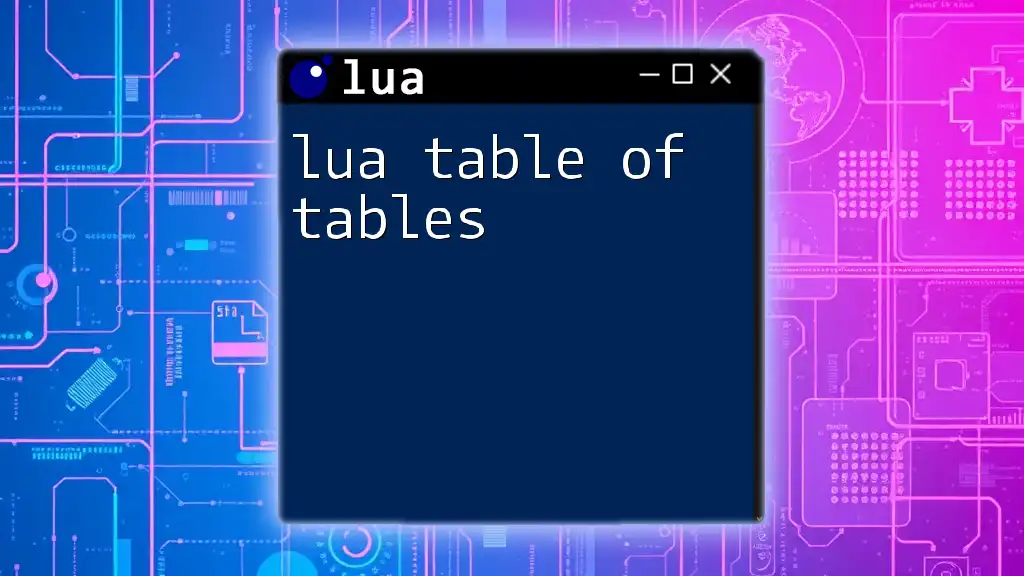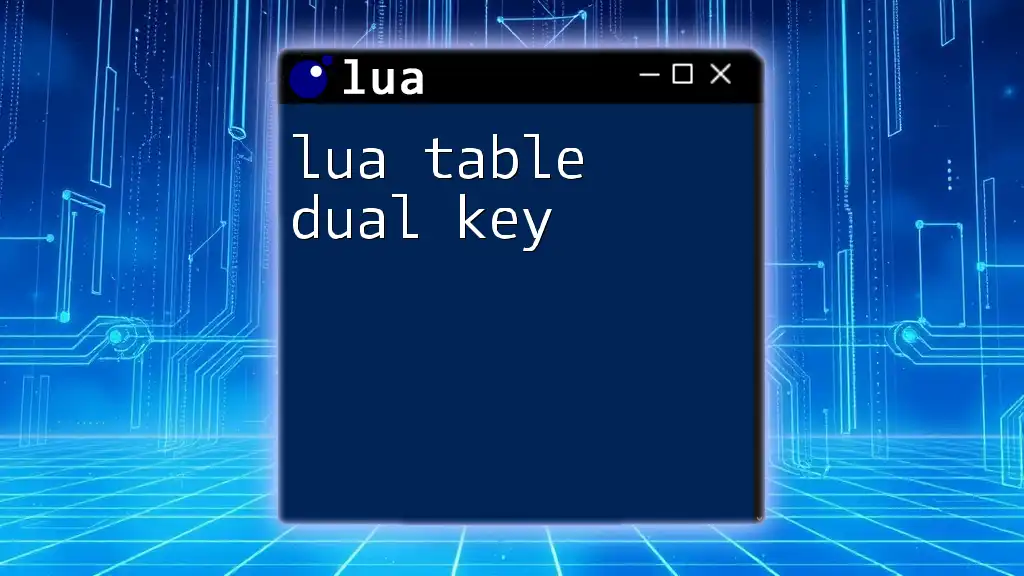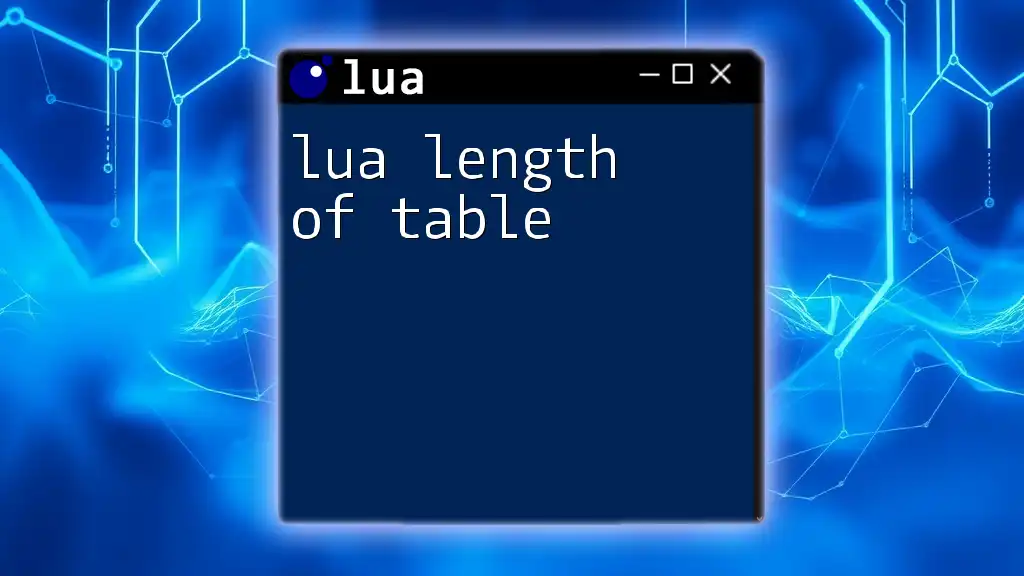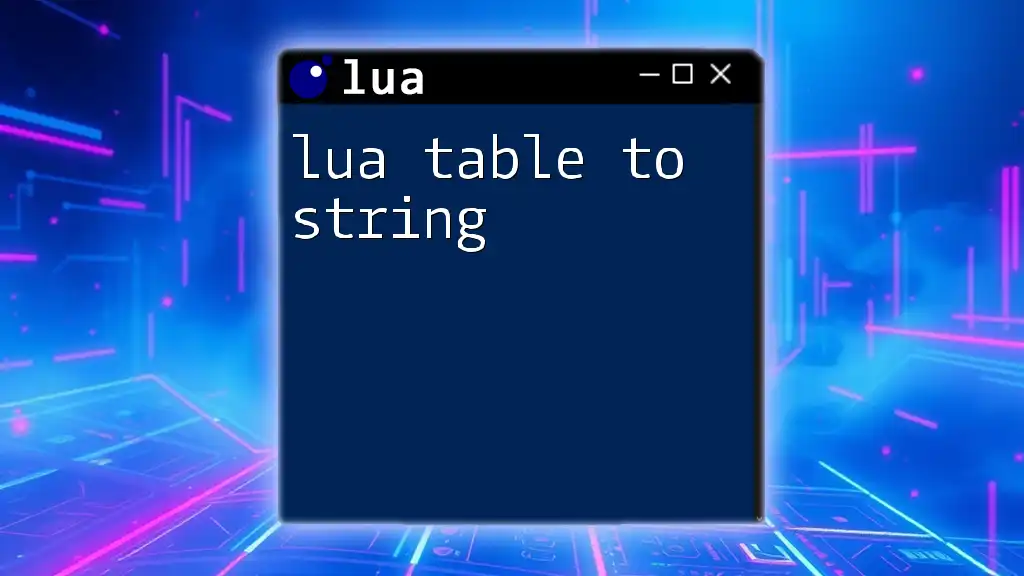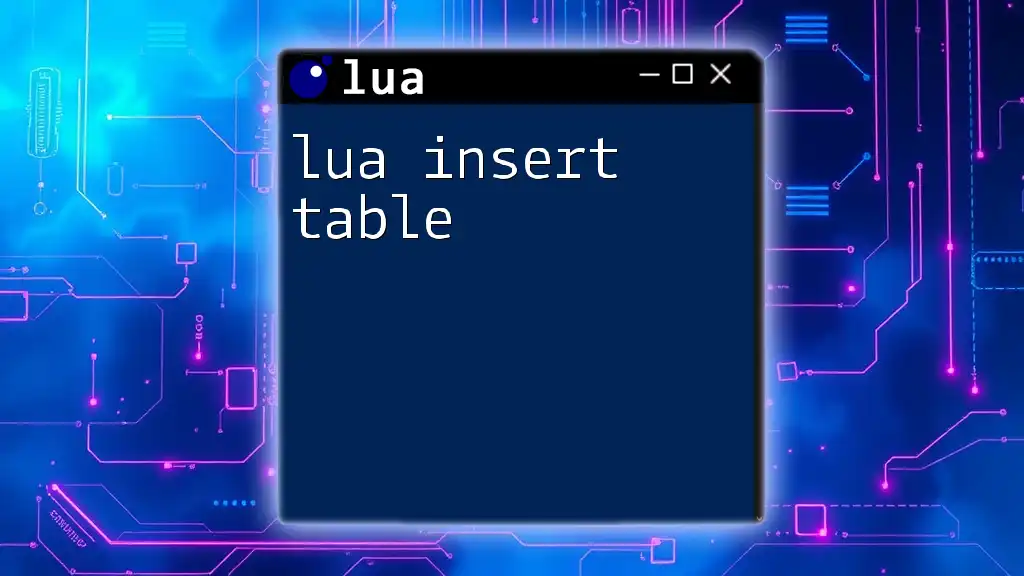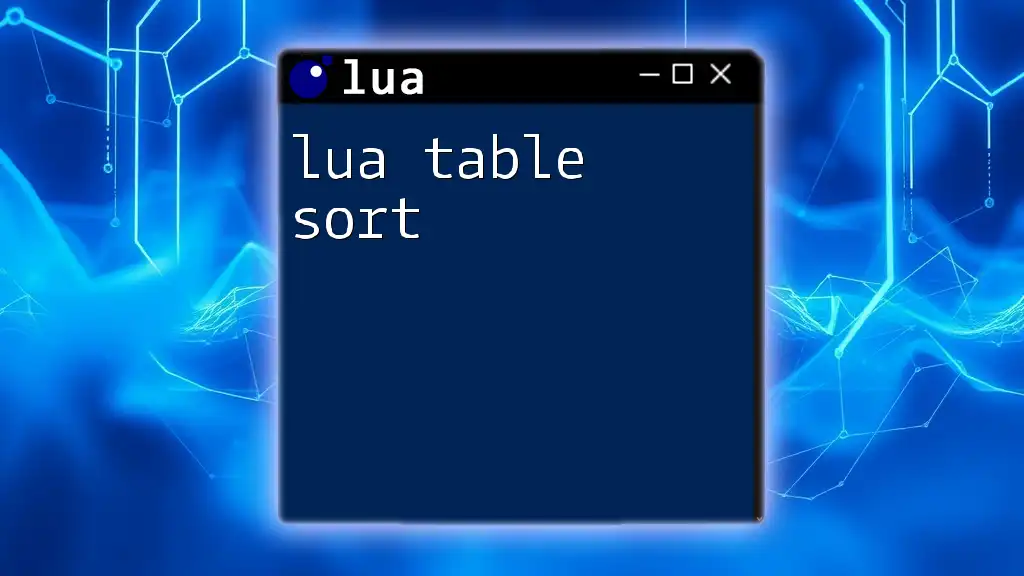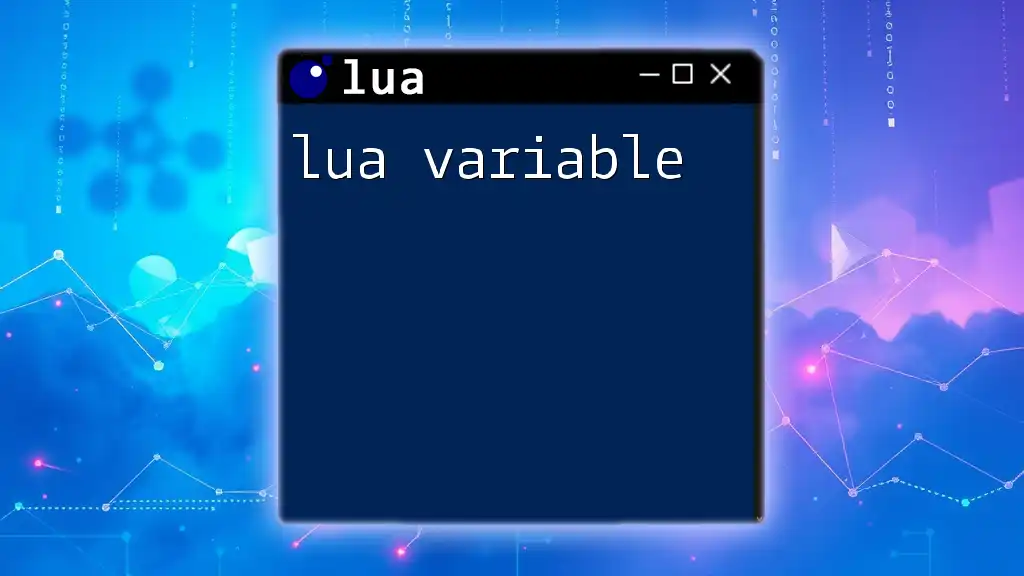A Lua table of tables is essentially a nested table structure where each entry can contain another table, allowing for complex data organization.
Here's a code snippet demonstrating a simple table of tables in Lua:
-- Defining a table of tables
local students = {
{name = "Alice", age = 20},
{name = "Bob", age = 22},
{name = "Charlie", age = 19}
}
-- Accessing data
for _, student in ipairs(students) do
print(student.name .. " is " .. student.age .. " years old.")
end
Understanding Lua Tables
What is a Lua Table?
A Lua table is a powerful and flexible data structure that serves as the primary way of organizing data in Lua. Tables allow you to group related information together, enabling efficient data manipulation and storage.
Key features of Lua tables include:
- Dynamic sizing: Tables can grow and shrink as needed, which means you don't have to worry about allocating a fixed size in advance.
- Flexibility of key-value pairs: Tables can hold any type of data, including strings, numbers, and even other tables, making them incredibly versatile.
Here's a simple example of creating a Lua table:
local simpleTable = { a = 1, b = 2, c = 3 }
Basic Operations with Lua Tables
Tables in Lua support various operations for data manipulation, including insertion, access, updating, and removal of values.
To insert data into a table, you can directly assign a value to a key:
local fruits = { "apple", "banana", "cherry" }
fruits[4] = "date" -- Inserting
To access values, use the respective key or index:
print(fruits[2]) -- Output: banana
To update a value in a table, simply assign a new value to an existing key:
fruits[2] = "blueberry" -- Updating
To remove a value from a table, you can use the `table.remove` function:
table.remove(fruits, 3) -- Removing "cherry"
By understanding these basic operations, you can effectively utilize tables to store and manipulate data in Lua.

Lua Table Inside Table
What is a Table Inside a Table?
A table inside a table, also known as a nested table, allows for the structuring of complex data. This is particularly useful for organizing data that has multiple related attributes. Using tables inside tables helps break down large datasets into manageable parts, improving the clarity and usability of your code.
For example, you can create a table that represents students, grouping their names and ages:
local nestedTable = {
student1 = { name = "Alice", age = 20 },
student2 = { name = "Bob", age = 22 }
}
Accessing Nested Table Values
Accessing values in nested tables requires you to specify each level of the hierarchy. For instance, to access Alice's name in the `nestedTable` example:
print(nestedTable.student1.name) -- Output: Alice
print(nestedTable.student2.age) -- Output: 22
This hierarchical access allows you to cleanly reference and manipulate higher levels of structured data.

Practical Use Cases of Tables in Lua
Grouping Related Data
Nested tables allow you to efficiently group related data. A common use case involves storing user information, such as names, ages, and email addresses. Here's how you can structure user data in a Lua table:
local users = {
{ name = "John", age = 30, email = "john@example.com" },
{ name = "Doe", age = 25, email = "doe@example.com" }
}
Each user is a table with its attributes. This organization makes it easy to iterate through user data and access specific attributes.
Complex Data Structures
Another compelling use case is representing a simple game state. For instance, you can create a table that holds both player information and enemy data:
local gameState = {
player = { x = 100, y = 200, health = 100 },
enemies = {
{ id = 1, type = "goblin", position = { x = 300, y = 150 } },
{ id = 2, type = "troll", position = { x = 400, y = 250 } }
}
}
The above structure allows for organized representation and manipulation of multiple game elements, facilitating smoother game state management.

Manipulating Tables of Tables
Iterating Through Nested Tables
To manipulate nested tables effectively, you'll often need to iterate through them. For instance, when you want to print out user data from the `users` table, you can do so using a `for` loop:
for _, user in ipairs(users) do
print("Name: " .. user.name .. ", Age: " .. user.age)
end
This loop accesses each user in the `users` table, allowing you to dynamically handle data as needed.
Using Functions with Tables of Tables
Creating functions that manipulate nested tables can streamline your code. For example, you can write a function to add a new student to the `nestedTable`:
local function addStudent(tbl, name, age)
table.insert(tbl, { name = name, age = age })
end
addStudent(nestedTable, "Charlie", 23)
This function effectively modifies the nested structure by adding new entries, emphasizing the advantage of modular design within your coding practices.

Summary
In this guide, we explored the concept of a Lua table of tables. We discussed the fundamental attributes of tables, their unique operations, and how nested tables yield a robust framework for managing complex data. With the ability to group related data and use functions for data manipulation, Lua tables provide a critical foundation for efficient programming in Lua.
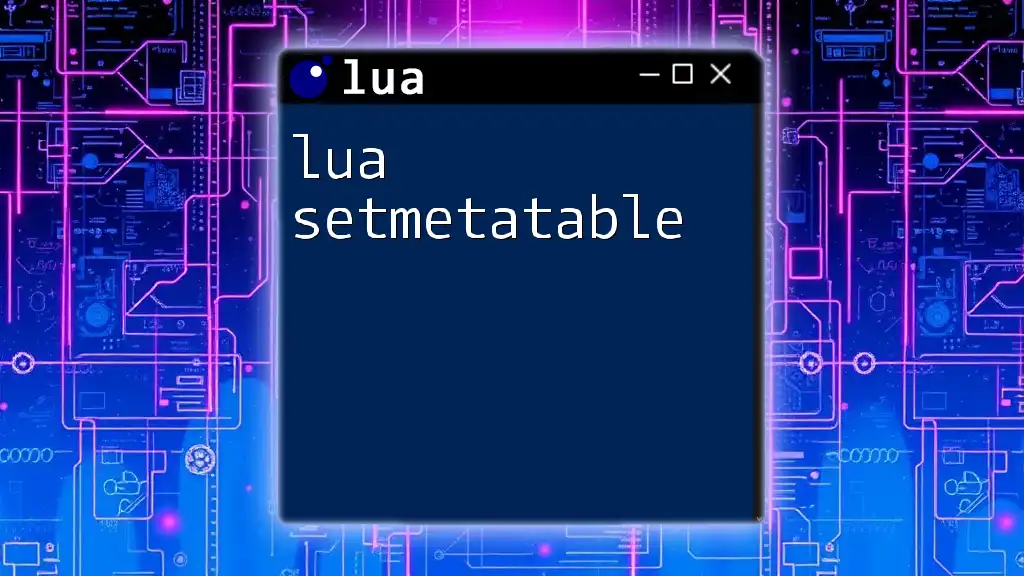
Frequently Asked Questions
What Are the Limitations of Lua Tables?
While Lua tables are powerful, they do have some limitations. There may be performance issues when dealing with extremely large tables, as they can consume considerable memory. Additionally, Lua does not provide native typing within tables, which means that data integrity checks must be managed explicitly.
When Should I Use Tables Inside Tables?
Use tables inside tables when you need to represent complex data relationships or when you have multiple attributes belonging to a single entity. This approach helps organize your data logically, improving code readability and maintainability.
How Can I Optimize the Use of Tables in Lua?
To optimize your use of tables in Lua, keep the following tips in mind:
- Minimize table size by removing unnecessary entries.
- Use clear and intuitive structure layouts to enhance understanding.
- Employ functions to encapsulate repetitive tasks, ensuring cleaner code.

Conclusion
By understanding and utilizing Lua tables of tables, you can effectively manage and manipulate complex datasets in your Lua applications. The versatility of this data structure is essential for effective programming, enabling you to write cleaner, more efficient code. Whether you are grouping related information or managing a complex game state, mastering tables is a fundamental skill in your Lua journey.

